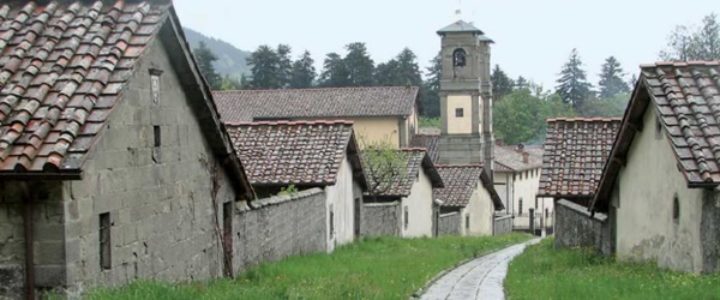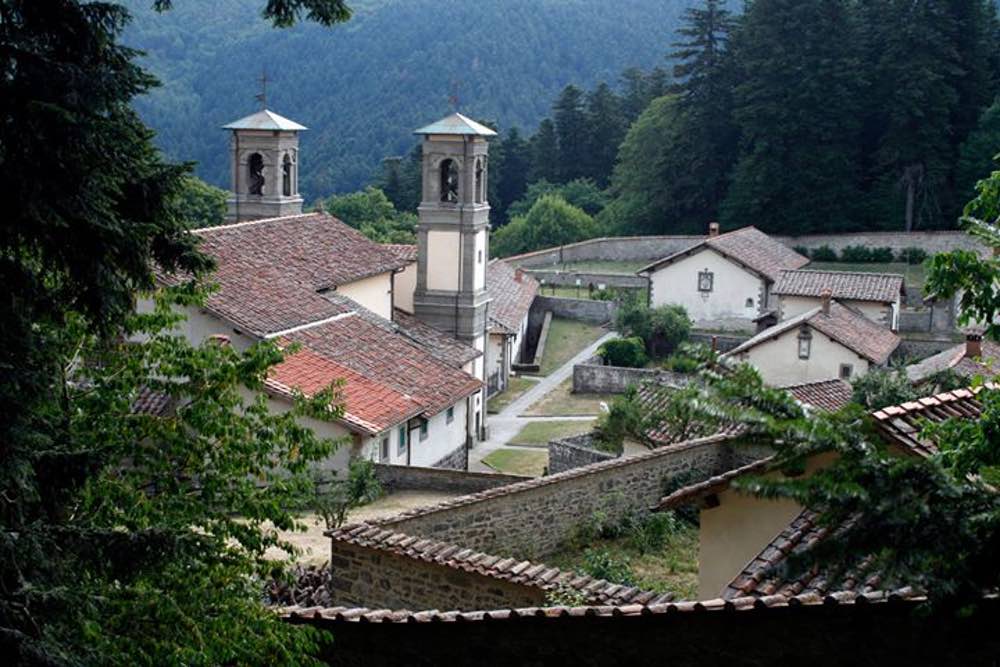
It was founded by Saint Romuald in the first years of the 11th century and is the mother house of the Benedictine Congregation of the Camaldolese. Saint Romuald had founded many hermit communities. Around 1012 he arrived between the pratomagno and the Monte falterona in the middle of the Casentino forests and decided to found a hermitage in a clearing called Campo di maldolo (Campus Maldoli). Encouraged by the bishop of Arezzo Teodaldo, under whose jurisdiction was that locality, he erected five cells and a small oratory dedicated to Saint Savior transfigured that is the first nucleus of the hermitage. Later 15 cells were added to the original core of the structure. Today the hermitage of camaldoli is one of the two lungs with which breathes the monastic community present there: a short distance from each other in fact the monastery and the hermitage, whose monks belong to the same community, live the same rule, but they follow partly different lifestyles, giving more space to community life at the monastery and giving priority to personal recollection at the hermitage. There are currently nine monks living in the hermitage.
The hermitage, entirely surrounded by a stone wall, faces the street with a door, through which you enter the inner courtyard. From the courtyard you can visit:
the guesthouse, where guests and pilgrims are welcomed;
the church, with the monastic choir;
the ancient cell of San Romualdo, now incorporated in the building of the library, which keeps inside the typical structure of the hermit cell: a corridor that winds on three sides, guarding inside the living spaces of the monk, the bedroom, the study, the chapel, the chapel. This “spiral” structure, in addition to providing shelter from the harsh winter temperatures, symbolizes the interior path of the monk trying to enter himself;
the hall of the ancient refectory or chapter.
A gate separates the courtyard from the more internal area reserved exclusively for monks living in small separate cells.


